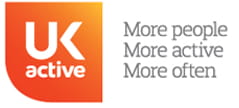Have you ever wondered why there is always music in a spin class? For some athletes or people who run, jog, lift weights or do some other form of exercise, music is not just a motivation, it is essential.
Bumpin’ tunes, a heavy beat or inspirational lyrics are the key to many people finding their peak performance or to complete a great workout.
Protest song
Just how addicted to music some athletes have become was made clear by the level of protests when the USA Track and Field Association, which governs distance running in the States, banned portable music devices from marathons. The outcry meant the ban was overturned to just apply to people vying for awards and prize money.
Research into why people seem to need music to exercise effectively has been carried out in some depth in the past decade, although there is research dating back to the early 20th century which suggested people cycled faster while a roadside band played than they did when it was silent. Psychologists have now come up with several possible reasons why music is seen as so important:
- Music distracts people from pain and fatigue
- It elevates the mood
- It increases endurance
- Music reduces perceived effort
- It may improve metabolic efficiency
Legal highs
In a review of research in 2012, a sports science expert from Brunel University in London, Costas Karageorghis, said: “Music could be thought of as a type of legal performance-enhancing drug.”
But, if you were thinking it was simply a case of a fast beat making your legs move quicker, think again.
Emotional music
Memories, emotions, associations all play a part. For some people, the extent to which they identify with the singer’s emotions and viewpoint determines how motivated they feel. For others the rhythms of the music may not be as important as the cadence of the lyrics.
Two of the most important qualities are tempo (speed) and rhythm response (how you synchronise to the music). This latter can vary from culture to culture – what makes someone in Africa tap their feet might be very different to what gets someone in Iceland moving.
Moving to the beat
Some psychologists have come up with some more solid suggestions. Evidence suggests that people have an innate preference for rhythms at a frequency of 120 beats per minute (bpm) or two beats per second.
An analysis of more than 74,000 popular songs found that 120bpm was the more prevalent pulse. When on a treadmill though, this seems to rise to 160bpm while someone aiming for a seven minute mile or quicker may favour 180bpm. Most research however, suggests that 145bpm is the ceiling for impact: anything higher doesn’t seem to contribute much more motivation.
But while much of the impact of music seems to be on the mind – psychological – is there any biological impact. Karageorghis, along with C.J. Bacon of Sheffield Hallam Univesity found that participants who cycled in time to music required seven percent less oxygen. Working to the beat made them more efficient cyclists.
A tune stuck in your head
However, it is upon the brain that sound has the greatest impact. As your body sends signals that fatigue is setting in – increased sweat, rising levels of lactate, a faster heart-beat – so music competes with this feedback to the brain, either nullifying or reducing it.
And one final thought – music and movement may have become so closely entwined over our evolution that when we hear a tune, we are almost hard-wired to move. Be it tapping feet, clicking fingers, nodding heads or running a six minute mile!












